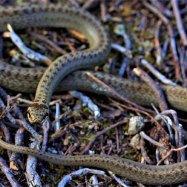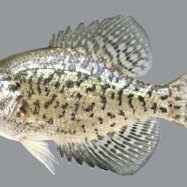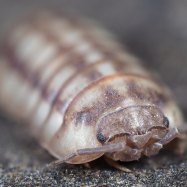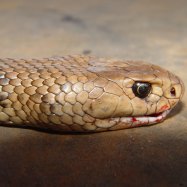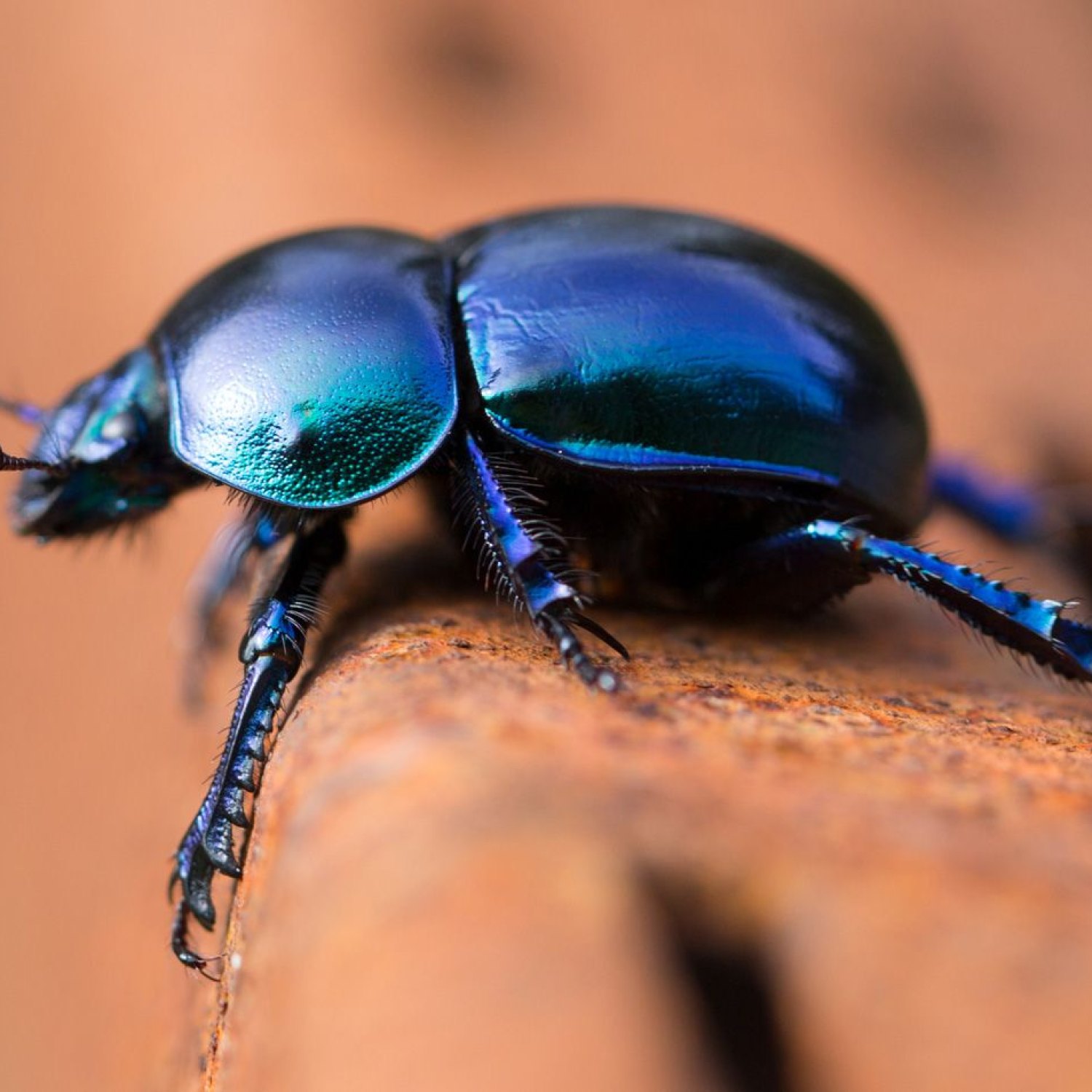
Beetle
Range from 0.3 mm to over 15 cm
Beetles are fascinating creatures found all around the world, except in Antarctica. With over 350,000 species, they come in a wide range of sizes- from 0.3 mm to 15 cm. Their compact and hard-bodied shape, along with the unique feature of elytra covering their wings, makes them stand out in the animal kingdom. These diverse insects belong to various families and can be found in various habitats, making them a crucial part of our ecosystem. #BeetleFacts #AnimalKingdom #Insects.
Animal Details Summary:
Common Name: Beetle
Kingdom: Animalia
Habitat: Diverse habitats including forests, grasslands, deserts, and freshwater ecosystems
The Fascinating World of Beetles
Beetles are some of the most diverse and fascinating creatures on our planet. These small but mighty insects belong to the scientific order Coleoptera, meaning "sheathed wing." With over 400,000 known species, beetles make up almost 40% of all insect species and about 25% of all animal species on Earth. From the tiniest 0 Beetle.3mm beetle to the incredible 15cm long Goliath beetle, these creatures come in all shapes, sizes, and colors.Ancestry and Classification
Beetles have been around for millions of years. Fossil records show that the earliest beetle ancestor appeared over 300 million years ago. But it wasn't until the Jurassic period, around 200 million years ago, that beetles diversified into the vast number of species we know today.Scientifically known as Coleoptera, beetles are classified in the animal kingdom Animalia and phylum Arthropoda, meaning "jointed feet." They belong to the class Insecta, which includes other familiar insects such as butterflies, ants, and grasshoppers. Within the Insecta class, they are classified under the order Coleoptera, along with other related insects such as weevils and fireflies.
The Diversity of Beetles
Despite being called "beetles," these creatures have incredibly diverse physical features, making it challenging to describe a typical beetle. Some have intricate patterns of colors and shapes on their exoskeleton, while others have camouflaging adaptations to blend in with their environment Boelens Python. Some beetles have long, slender bodies, while others have short, compact ones. They also come in various shapes, with some looking like small tanks with impressive armored bodies, while others resemble delicate jewels.Beetles can be found in almost every habitat, from forests and grasslands to deserts and freshwater ecosystems. Some species are adapted to live in extreme environments, such as in hot deserts or high-altitude alpine regions. They are also found on every continent except Antarctica, demonstrating their incredible adaptability and resilience.
Feeding Habits of Beetles
When it comes to feeding habits, beetles are quite versatile. While some species are strictly herbivorous, feeding on plants and fruits, others are predatory, using their strong jaws to catch and eat other insects. Some beetle species are scavengers, feeding on decaying organic matter, while others are opportunistic feeders, taking advantage of whatever food source is available.Because of their wide variety of diets, beetles are essential for ecosystem balance. As herbivores, they keep plant populations in check, preventing overgrowth, and promoting species diversity. As predators, they control harmful insect populations, helping to prevent infestations and diseases. And as scavengers, they play a crucial role in nutrient cycling, aiding in the decomposition of dead organic matter.
The Incredible Adaptations of Beetles
One of the most fascinating aspects of beetles is their incredible adaptations. With a range of body shapes and sizes, these creatures have developed various adaptations to help them thrive in their environments.One of the most notable adaptations is a beetle's elytra. These are the pair of hard, protective wing cases that cover and protect its wings. Unlike other flying insects, beetles' elytra do not fold down and instead remain open when they fly. This unique feature not only provides protection for their wings but also gives them stability and control during flight.
Another essential adaptation of beetles is their incredible strength. Despite their small size, beetles are known for their incredible strength, with some species being able to lift objects up to 1,000 times their body weight. This strength is made possible by their hard exoskeleton, made of a protein called chitin. This protein is also present in other arthropods, such as crabs and shrimp.
The Role of Beetles in Human Life
Beetles are essential not just in nature but also in human life. Many beetle species provide crucial ecosystem services, such as pollination and pest control. They also play a significant role in agriculture, with some species acting as biological agents for natural pest control. For example, the ladybug beetle is known to prey on aphids, a common pest in agricultural crops.In some cultures around the world, beetles have been revered and even considered sacred. For example, the scarab beetle was highly regarded in ancient Egyptian mythology, representing the sun god and symbolizing rebirth and renewal.
Challenges Facing Beetles
Despite their crucial role in the environment, beetles face some significant threats that endanger their populations. One of the main challenges facing beetles is habitat loss and fragmentation due to human activities such as deforestation and urbanization. This habitat loss can disrupt beetles' life cycles, making it difficult for them to reproduce and thrive.Beetles are also susceptible to pesticides and other chemicals used in agricultural practices. These chemicals can harm not only the beetles but also the plants they depend on for food. Pollution and climate change are also major threats to beetle populations, impacting their habitats and food sources.
In Conclusion
Beetles may seem like tiny, insignificant insects, but they play a critical role in our ecosystems. With their incredible adaptability and diversity, these creatures have managed to thrive in a wide range of environments worldwide. Their unique adaptations and essential contributions to our world make them a truly fascinating species.As we continue to learn more about beetles, it is essential to recognize and protect these creatures and their habitats. By preserving natural habitats and reducing the use of harmful chemicals, we can help ensure the survival of these amazing insects for future generations to appreciate and admire. After all, as the saying goes, "good things come in small packages," and beetles are no exception.

Beetle
Animal Details Beetle - Scientific Name: Coleoptera
- Category: Animals B
- Scientific Name: Coleoptera
- Common Name: Beetle
- Kingdom: Animalia
- Phylum: Arthropoda
- Class: Insecta
- Order: Coleoptera
- Family: Various
- Habitat: Diverse habitats including forests, grasslands, deserts, and freshwater ecosystems
- Feeding Method: Varies depending on the species, but most beetles are herbivorous or predatory
- Geographical Distribution: Worldwide
- Country of Origin: N/A
- Location: Can be found on every continent except Antarctica
- Animal Coloration: Varies greatly depending on the species
- Body Shape: Compact and hard-bodied with a pair of elytra covering the wings
- Length: Range from 0.3 mm to over 15 cm
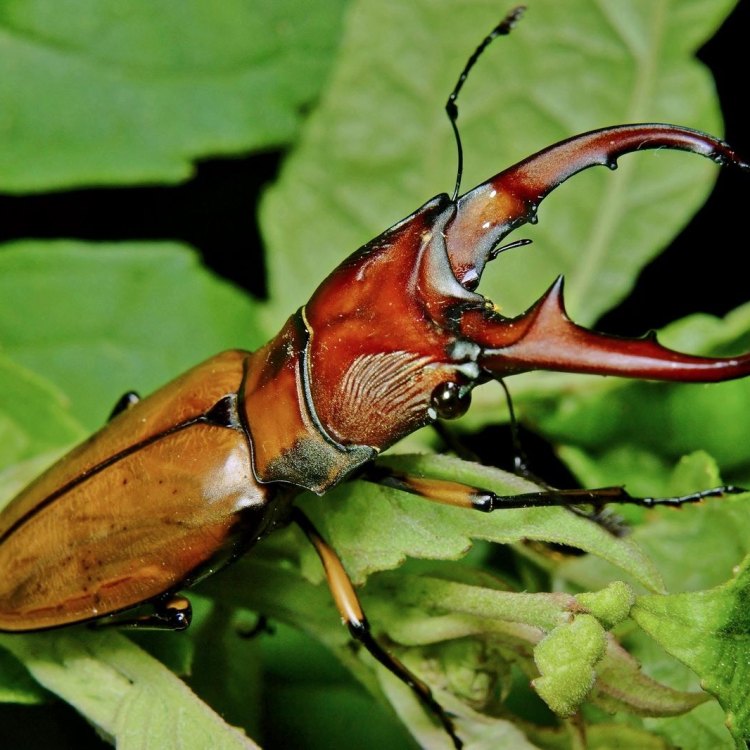
Beetle
- Adult Size: Varies depending on the species
- Average Lifespan: Varies depending on the species, but most beetles live for several months to a few years
- Reproduction: Sexual
- Reproductive Behavior: Varies depending on the species, but most beetles mate and lay eggs
- Sound or Call: Some beetles produce sounds by rubbing their body parts together
- Migration Pattern: Some beetles migrate to find food or suitable breeding grounds
- Social Groups: Varies depending on the species, but many beetles are solitary
- Behavior: Varies depending on the species, but most beetles are active during the day or night
- Threats: Habitat loss, pollution, climate change, and predation
- Conservation Status: Varies depending on the species, but some beetles are endangered or threatened
- Impact on Ecosystem: Beetles play important roles in ecosystems as pollinators, decomposers, and as a food source for other animals
- Human Use: Some beetles are used in scientific research, as bioindicators, as food or medicine, and in art and jewelry
- Distinctive Features: Hard exoskeleton, elytra covering the wings, specialized mouthparts, and varied body shapes and sizes
- Interesting Facts: Beetles are the largest group of insects, with over 400,000 known species.
- Predator: Various predators including birds, reptiles, amphibians, and other insects
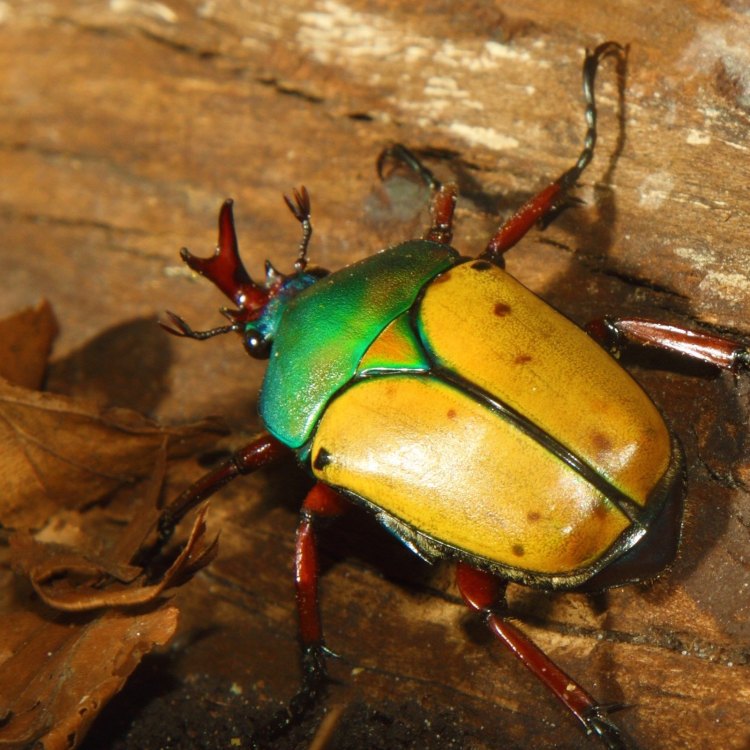
Coleoptera
The Fascinating World of Beetles: A Guide to Understanding These Diverse Insects
When we think of insects, the image of a tiny, scurrying creature may come to mind. But have you ever stopped to appreciate the sheer diversity within the insect world? Among the most fascinating and diverse group is the beetles, with over 400,000 known species and countless yet to be discovered. These incredible creatures have been around for millions of years and have adapted to thrive in almost every habitat on Earth.From their impressive size and varied reproductive behaviors to their important role in the ecosystem, here's everything you need to know about beetles PeaceOfAnimals.Com.
From Miniature to Massive: The Size of Adult Beetles
One of the notable features of beetles is their incredible variety in size. Depending on the species, adult beetles can range from a tiny 0.25mm to a whopping 17cm in length. The smallest known beetle is the featherwing beetle, found in Colombia, while the largest is the Titan beetle, found in South America.The size and shape of beetles vary depending on their habitat and way of life. Some have long and slender bodies, while others have flat and round bodies. Some have strong mandibles, used for chewing through plants or prey, while others have elongated snouts perfect for sucking on nectar.
A Life Span as Diverse as Their Size
Just as their size varies, so does the lifespan of beetles. Some species, like the death-feigning beetle, have a short lifespan of only a few months Bladefin Basslet. On the other hand, the jewel beetle can live for up to 20 years. Most beetle species live for several months to a few years, with some even going into a period of diapause (a state of dormancy similar to hibernation) during harsh winter conditions.The Birds and the Bees of Beetles: Reproduction
Most beetles reproduce sexually, meaning they require both male and female individuals to mate. However, the reproductive behaviors of beetles can vary greatly depending on the species.For some species, mating is a one-time event, and females will lay all of their eggs at once. In contrast, other species may mate multiple times, and females may continue to lay eggs throughout their lifespan.
The Call of the Beetle: Sound Production
While we may think of insects as quiet creatures, some beetles have evolved the ability to produce sounds for communication. This is done by rubbing different body parts together, such as the wings, legs, or abdomen. The specific sounds produced can vary from a series of clicks to a high-pitched buzz.These sounds can serve several purposes, such as attracting a mate, warning predators, or communicating with other beetles.
The Great Migration: Beetles on the Move
Many species of beetles are known to migrate, often in search of food or suitable breeding grounds. The most well-known migration is that of the Monarch butterfly, but some beetle species also have impressive migratory patterns.One such species is the strawberry seed beetle, which travels up to 300 miles each spring to reach newly emerging strawberry fields. Other species may migrate to higher altitudes during warmer summers or to lower elevations during colder winters.
Together or Alone? The Social Dynamics of Beetles
While some beetle species may live in social groups, many are solitary, preferring to live and hunt on their own. In contrast, some bark beetles live in colonies within trees, cooperating to build nests and raise their young.Due to their large numbers and diverse habitats, it's difficult to make generalizations about the social behavior of beetles. Instead, it's essential to study each species individually to understand their unique dynamics.
Night Crawlers or Day Flyers: The Behavior of Beetles
As with most insects, the behavior of beetles can vary depending on the species. Some are active during the day, while others are active at night. Some species are attracted to light, while others avoid it.The behavior of beetles is also influenced by their diet and habitat. Predaceous beetles, for example, are more active during the day, while plant-eating beetles are active at night to avoid predators.
The Threats Facing Beetles
As with many other animal species, beetles are facing several threats to their survival. Habitat loss, pollution, and climate change are all major factors contributing to the decline of beetle populations. Additionally, predation from other animals, such as birds, reptiles, and other insects, can also impact beetle populations.Some beetle species are also targeted for their valuable body parts, such as the horn of the rhinoceros beetle, which is used in traditional medicine and jewelry. These threats have resulted in the conservation status of many beetle species ranging from endangered to least concern.
The Critical Role of Beetles in Ecosystems
Despite their small size, beetles play a crucial role in maintaining balance within ecosystems. They have a diverse range of roles, including pollination, decomposition, and acting as a food source for other animals.Beetles are essential pollinators for many flowering plants, especially in temperate regions. Some species, like the dung beetle, also play a vital role in nutrient cycling by breaking down dung and other organic matter, which contributes to soil health.
A Human Connection: Beetles in Our Lives
Beyond their ecological significance, beetles have also found a place in human society. As bioindicators, they are used in scientific research to study the health of ecosystems. Some beetles, like the lady beetle, are also used as natural pest control in agriculture.Different cultures around the world also have various uses for beetles. In some regions, beetles may be consumed as a source of protein, while in others, they are used in traditional medicine. In ancient Egypt, beetles, specifically scarabs, were revered and often depicted in art and jewelry.
The Unique Physical Characteristics of Beetles
One of the most distinctive features of beetles is their hard exoskeleton, which protects their bodies from predators and environmental factors. This exoskeleton is made of a protein called chitin, which is the same material found in the shells of other arthropods like crabs and lobsters.Another unique feature of beetles is the elytra, a pair of hard, protective wings that cover the delicate hindwings underneath. These elytra serve both as protection and insulation for the beetle, and in some species, they are brightly colored to deter predators.
Finally, the varied body shapes and sizes of beetles make them easy to identify and classify. From the long and narrow body of the stag beetle to the round and flat body of the ground beetle, each beetle species has evolved unique features that make them well-suited to their habitats and way of life.
Fascinating Facts About Beetles
To wrap up this guide to beetles, here are some interesting facts about these incredible insects:- Beetles are the largest group of insects, with over 400,000 known species and countless more yet to be discovered.
- The term "coleoptera" means "sheathed wing" in Greek, referring to the elytra of beetles.
- Some species of beetles, like the bombardier beetle, can produce a chemical spray to deter predators.
- The world's most expensive coffee, Kopi Luwak, is made from coffee beans that have been eaten and passed through the digestive system of a specific type of beetle.
- In some cultures, beetle species are considered symbols of good luck and prosperity.
Conclusion
In conclusion, beetles are truly incredible creatures with an unmatched diversity in size, behavior, and appearance. They have adapted to thrive in almost every corner of the world and play critical roles in maintaining the health and balance of ecosystems.So, the next time you see a beetle scurrying across your path, take a moment to appreciate these fascinating insects and the unique features that make them one of the most diverse groups in the animal kingdom.

The Fascinating World of Beetles
Disclaimer: The content provided is for informational purposes only. We cannot guarantee the accuracy of the information on this page 100%. All information provided here may change without prior notice.


